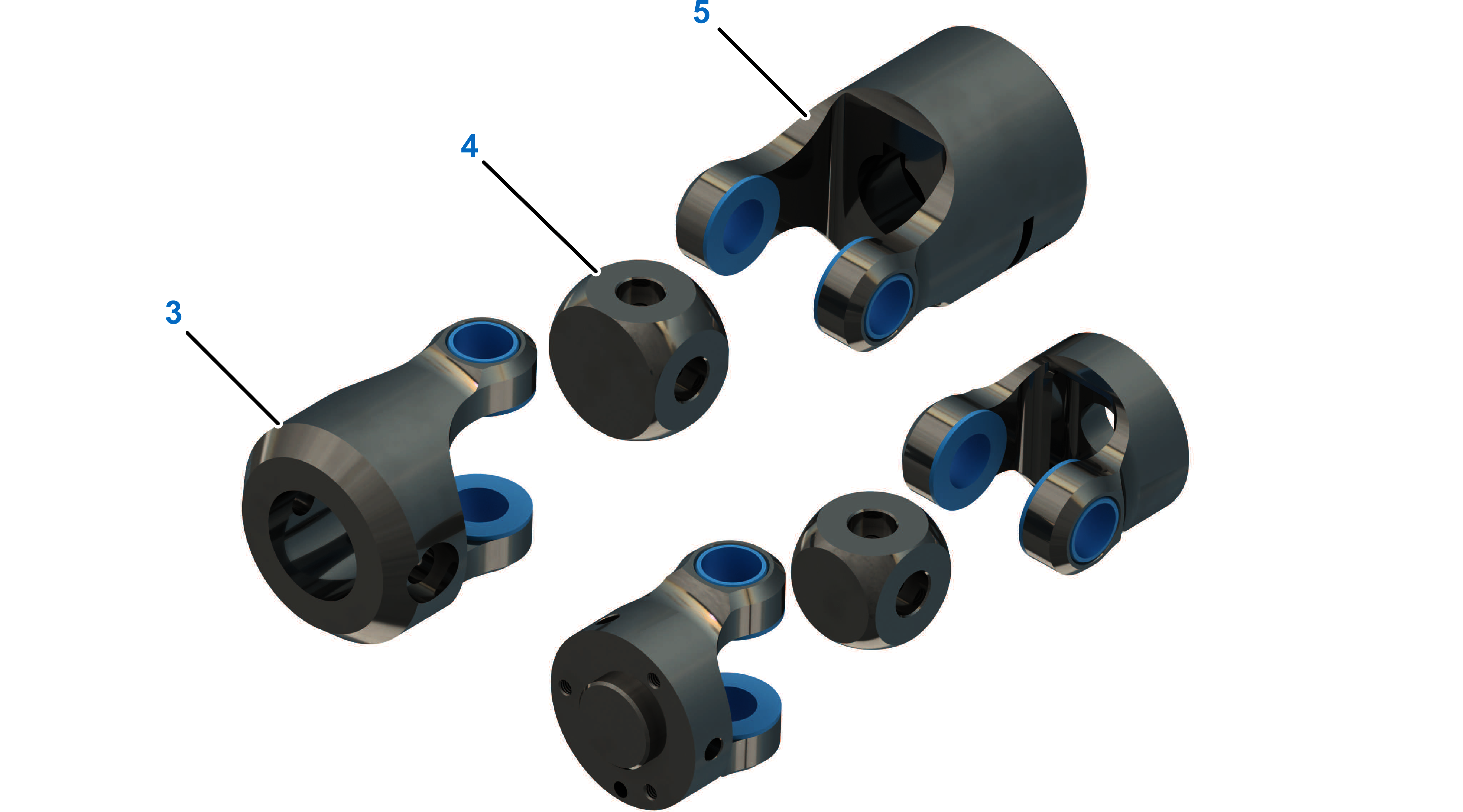Replacing the Plain Bearings
Removing the Plain Bearings
|
Step |
Action |
|---|---|
|
1 |
|
|
2 |
Remove the upper and the lower universal joint from the telescopic axis as described in Replacing the Universal Joints. |
|
3 |
Remove the four screws and the four lock washers (1) from the axle bolts in each universal joint. 
|
|
4 |
Remove the four axle bolts (2) from each universal joint. 
NOTE: If the axle bolts do not drop out, loosen the axle bolts by slightly screwing and moving a M5 screw into the axle bolt.
|
|
5 |
Pull apart the two forks, (3) and (5), from each universal joint and remove the axis cuboids (4). 
|
|
6 |
Press out the plain bearings (6) from the forks by using a cylindrical bolt (7) with a diameter of 11…11.5 mm (0.43…0.45 in). 
|
Mounting the New Plain Bearings
|
Step |
Action |
|---|---|
|
1 |
Press in the new plain bearings (1) into the forks by using a cylindrical bolt (2) with a maximum diameter of 9.5 mm (0.374 in) and a plane disc (3). Ensure that the plain bearings are fully seated. 
|
|
2 |
Reassemble the universal joints in reverse order and verify that the orientation of the two forks is the same as shown in the figures below. Tightening torque for the screws: 3 Nm (26.6 lbf-in) 
NOTE: At the lower universal joint, the fitting hole of the fork (4) must face to the top and the fitting hole of the fork (5) must face to the left.

NOTE: At the upper universal joint, the hole for the larger screw M6 of fork (6) must face to the top and the hub of the fitted key of fork (7) must face to the right.
|
|
3 |
Mount the universal joints to the telescopic axis as described in Replacing the Universal Joints. Verify that the locating pin in the lower universal joint is in alignment with the screw M6 of the upper universal joint or also the larger bore of the upper tube. |
|
4 |
Mount the telescopic axis as described in Mounting the Telescopic Axis. |
|
5 |
Calibrate the telescopic axis depending on the necessary angle precision of the application. For further information, refer to Calibrating the Rotational Axis. |